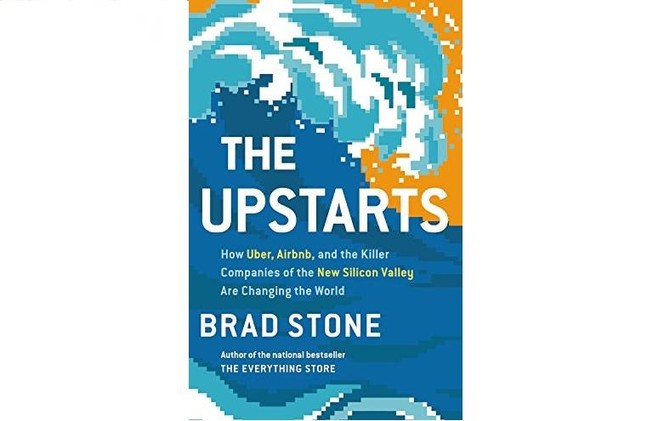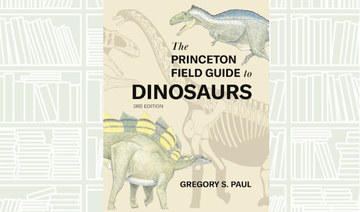The rise of smartphones and social media has enabled the expansion of the sharing economy, a phase during which the likes of Uber and Airbnb were born.
The power of these entrepreneurial ventures is continuously rising. Airbnb has already exceeded 10 million guest stays and Uber continues to grow despite its current failings. No matter how bad the PR is getting for Uber, consumers do not seem to care. As long as the company’s ride hailing app continues to outperform rival apps, Uber will continue to dominate the market.
Brad Stone has covered the Silicon Valley as a journalist for more than fifteen years. After his book “The Everything Store: Jeff Bezos and the Age of Amazon,” which won the Financial Times and Goldman Sachs Business Book of the Year Award in 2013, he is back with an enthralling account of how Uber and Airbnb came to be and how a new generation of entrepreneurs are changing the way we live in “The Upstarts: How Uber, Airbnb, and the Killer Companies of the New Silicon Valley Are Changing the World.”
Travis Kalanick and Brian Chesky, the young CEOs behind Uber and Airbnb respectively, are part of a new breed of tech leaders who are different from the previous generation of introverted innovators such as Bill Gates, Larry Page and Mark Zuckerberg.
“Instead, they are extroverted storytellers, capable of positioning their companies in the context of dramatic progress for humanity and recruiting not only armies of engineers but drivers, hosts, lobbyists and lawmakers to their cause” Stone wrote in the book.
Chesky grew up in Niskayuna, New York, in a middle-class family. Joe Gebbia, who co-founded Airbnb with Chesky, was born in Atlanta, Georgia. The pair met in classes at the Rhode Island School of Design and became firm friends.
After Gebbia graduated, he went to San Francisco and asked Chesky if he would like to come and share the rent of his apartment. Chesky told Gebba that if he made the move, he would keep a new part-time teaching job in Los Angeles but would spend the weekends in San Francisco. For that reason, he asked Gebbia if he could rent the couch in the living room for $500 a month instead of renting a whole room. Gebbia replied that Chesky needed to be fully committed or else he would have to give up the apartment. Just as Chesky decided to make the move, Gebba sent him the e-mail that would change their lives: “I thought of a way to make a few bucks, turning our place into a designer’s bed and breakfast, offering young designers who come into town a place to crash during the four-day event (a design conference), complete with wireless Internet, a small desk place, sleeping mat and breakfast each morning. Ha!”
It took the pair three days to put together the first Airbedandbreakfast.com website using free tools available online. The first guest to use Airbedandbreakfast.com was Amol Surve. He was greeted at the door by the site’s co-creator Gebbia. Surve, who came from Mumbai, had use the Internet to rent an airbed for $80 a night because all the hotels in the area were either booked or too expensive.
He did not know what to expect but soon loved the experience of living in a temporary home. Two other guests also used the apartment during the design conference. After the three travelers left, the co-founders were not only able to pay their rent but they were also touched by the friendships they had made with their guests.
For a year, nothing happened. Chesky and Gebbia looked for investors but “very few people even met with us, they considered us crazy,” Chesky admitted. However, by 2010, Airbnb covered 8,000 cities.
While Chesky and Gebbia were working on better versions of what was still known as Airbedandbreakfast.com, Garret Camp, a Canadian entrepreneur, had just sold a website discovery tool, StumbleUpon, to eBay for $75 million. He was rich and living the good life but he had one problem — his Mercedes-Benz sports car. It stayed in the garage and he barely used it as he found driving in San Francisco to be too stressful. He became obsessed with the idea of an on-demand car service that passengers would be able to track via a map on their phones. He soon found out about the German word “Uber” and settled for the name “UberCab.”
On Nov. 17, 2008, Camp registered UberCab as an LLC in California. In December, on his way to attend LeWeb, a high-profile technology conference in Paris, he stopped in New York to meet Oscar Salazar, a friend. He shared his idea with Salazar who had also experienced problems with cabs in Mexico, Canada and France. “I don’t know if this is a billion-dollar company but it’s definitely a billion-dollar idea,” Salazar said before developing a prototype for Camp.
When UberCab looked for capital, most Silicon Valley investors passed on the deal, just as they had with Airbnb. Eventually, Uber gathered $1.3 million and proceeded to make history.
Uber, unlike Airbnb which had become global as soon as it was launched, had to enter each market on an individual basis. Each city was different and presented unique challenges. One of the greatest problems that Uber faced was the fact that it used contract drivers instead of full-time employees. This triggered endless controversies linked to background checks, proper insurance and the safety of both the drivers and the riders using its service.
By the end of 2016, Uber introduced a new type of work flexibility for its drivers and it also lowered the price of its fares. These measures boosted Uber’s business. In 2014, Uber booked 200 million rides while in 2016, the total number of rides reached one billion and six months later, the number had already doubled.
By the end of 2016, Airbnb and Uber had thousands of employees and offices around the world.
Stone gives us a detailed account of how this new breed of CEO — bold, ruthless and resourceful — is making a lasting impact on the way we live and travel.
Book Review: How Uber and Airbnb are changing the world
Book Review: How Uber and Airbnb are changing the world

What We Are Reading Today: Heart of Darkness: Unraveling the Mysteries of the Invisible Universe

- The story of how evidence for the so-called “Lambda-Cold Dark Matter” model of cosmology has been gathered by generations of scientists throughout the world is told here by one of the pioneers of the field, Jeremiah Ostriker, and his coauthor Simon Mitton
Authors: Jeramiah P. Ostriker and Simmon Mitton
Heart of Darkness describes the incredible saga of humankind’s quest to unravel the deepest secrets of the universe. Over the past 40 years, scientists have learned that two little-understood components—dark matter and dark energy—comprise most of the known cosmos, explain the growth of all cosmic structure, and hold the key to the universe’s fate.
The story of how evidence for the so-called “Lambda-Cold Dark Matter” model of cosmology has been gathered by generations of scientists throughout the world is told here by one of the pioneers of the field, Jeremiah Ostriker, and his coauthor Simon Mitton.
From humankind’s early attempts to comprehend Earth’s place in the solar system, to astronomers’ exploration of the Milky Way galaxy and the realm of the nebulae beyond, to the detection of the primordial fluctuations of energy from which all subsequent structure developed, this book explains the physics and the history of how the current model of our universe arose and has passed every test hurled at it by the skeptics.
This monumental puzzle is far from complete, however, as scientists confront the mysteries of the ultimate causes of cosmic structure formation and the real nature and origin of dark matter and dark energy.
What We Are Reading Today: ‘A Natural History of Shells’ by Geerat Vermeij

Geerat Vermeij wrote this “celebration of shells” to share his enthusiasm for these supremely elegant creations and what they can teach us about nature.
Most popular books on shells emphasize the identification of species, but Vermeij uses shells as a way to explore major ideas in biology.
How are shells built? How do they work? And how did they evolve?
With lucidity and charm, the MacArthur-winning evolutionary biologist reveals how shells give us insights into the lives of animals today and in the distant geological past.
What We Are Reading Today: The Princeton Field Guide to Dinosaurs

Author: Gregory S. Paul
The bestselling “Princeton Field Guide to Dinosaurs” remains the must-have book for anyone who loves dinosaurs, from amateur enthusiasts to professional paleontologists. Now extensively revised and expanded, this dazzlingly illustrated large-format edition features nearly 100 new dinosaur species and hundreds of new and updated illustrations, bringing readers up to the minute on the latest discoveries and research that are radically transforming what we know about dinosaurs and their world.
What We Are Reading Today: The Virtue Proposition by Sig Berg

Sig Berg, founder of the Severn Leadership Group, explains what’s missing from traditional leadership, with its emphasis on the rules and rituals of boardrooms and C-suites, and from iconoclastic leadership, which urges you to move fast and break things.
Neither of these embrace virtues, and neither has, nor ever will, deliver consistent superior results.
There is a courageous third way: virtuous leadership.
This book speaks to men and women who witness the absence of virtues and know they can do better, says a review published on goodreads.com.
What We Are Reading Today: ‘Stellar English’

Author: FRANK L. CIOFFI
“Stellar English” lays out the fundamentals of effective writing, from word choice and punctuation to parts of speech and common errors.
Frank Cioffi emphasizes how formal written English—though only a sub-dialect of the language—enables writers to reach a wide and heterogenous audience.
Cioffi’s many example sentences illustrating grammatical principles tilt in an otherworldly direction, making up a science fiction story involving alien invasion.


















